Top Gluten-Free Flours for Healthy Eating Habits
There are many gluten-free flours available, but not all of them are created equal. Some gluten-free flours are highly absorbent, requiring additional moisture in the recipes, while others are dense and need extra leavening.
Contents
Teff Flour
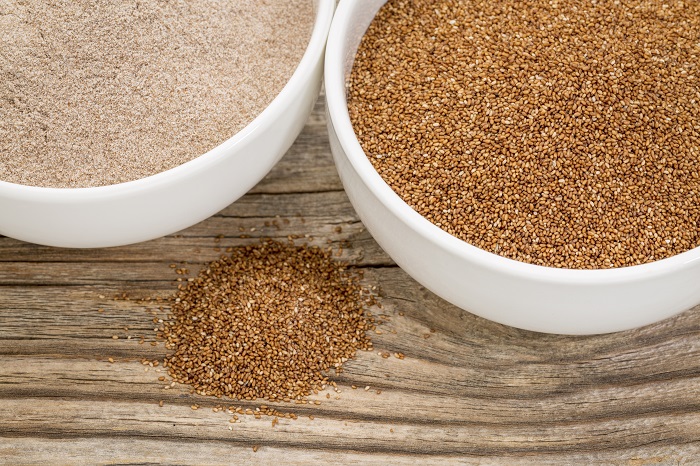
Versatile and healthy, organic teff flour is rich in fibre, iron, phosphorus, calcium, and B vitamins, and it helps boost circulation, improves immunity, and supports heart and bone health. It’s best used in combination with other gluten-free flours as when used alone, it can make baked goods dry and coarse. Keep in mind that the organic teff flour comes in various colours; lighter colours have a mild flavour while dark colours have an earthy flavour.
Teff flour, the standard type of flour for baking bread, pancakes, and cereals, should only be used in small amounts due to its strong multigrain flavour. You can use it alone or in combination with other flours to replace millet in any recipe that calls for it. Make pancakes and waffles by combining teff with buckwheat, or use it in a traditional Ethiopian Injera recipe, a type of sourdough flatbread.
Amaranth Flour
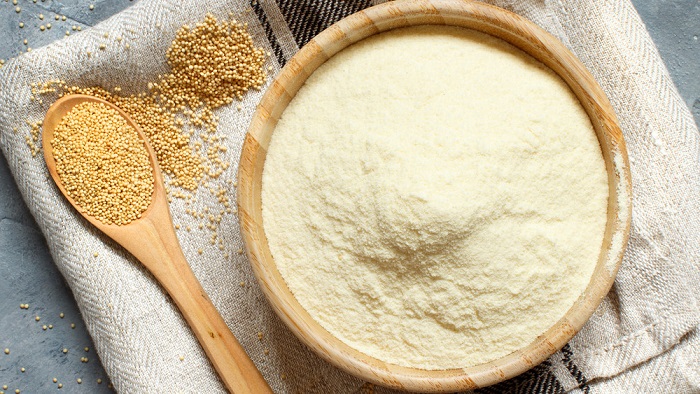
When used in combination, this nutty and earthy gluten-free flour absorbs the flours of other ingredients. Amaranth flour is high in fibre and protein and magnesium, manganese, phosphorus, selenium, and iron. It’s also high in folate, an especially important nutrient for pregnant women. Amaranth flour also has twice as much calcium as milk per serving.
However, baking with amaranth flour can be tricky because it works best when combined with other gluten-free flour, especially in bread, pie crust, and tortillas. When using this flour in baking, use a ratio of one part amaranth flour to three parts other gluten-free flour. When substituting wheat flour for amaranth flour, keep in mind the previous advice and use about 1 cup of amaranth flour per 1 cup of wheat flour. Since amaranth flour browns quickly, keep an eye on the temperature of your oven and the time it takes to bake.
Almond Flour
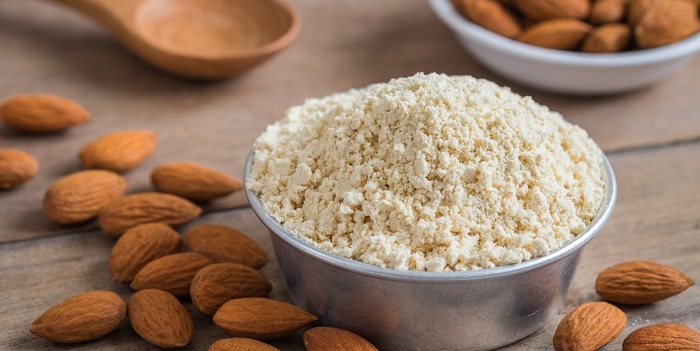
Being one of the most popular gluten-free flours, almond flour is a healthy alternative to traditional wheat flour. This flour is made entirely of ground almonds and is high in nutrients such as magnesium, calcium, potassium, manganese, and dietary fibre and protein. Moreover, almond flour may help lower LDL or “bad” cholesterol levels, according to research, especially in people with high cholesterol or diabetes.
Although almond flour is excellent for baking, you can also use it as a substitute for breadcrumbs and make baked chicken tenders. However, you’ll need about twice as much almond flour as regular flour when substituting almond flour for regular flour. However, other factors, such as the amount of moisture or the number of eggs, may come into play. When it comes to direct substitutions, almond flour is tricky, so your best bet is to find a recipe that uses it rather than attempting the conversion yourself.
Buckwheat Flour
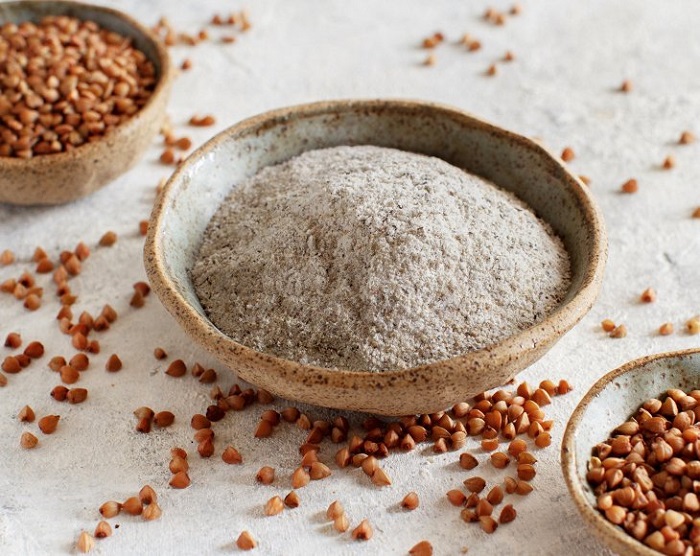
Buckwheat flour is not derived from wheat and does not contain gluten despite its misleading name. It has a rich, earthy flavour that complements yeast bread and quick bread. Because the flour has a crumbly texture, you may want to combine it with other gluten-free flour, such as brown rice flour. Buckwheat flour is high in fibre, antioxidants, iron, magnesium, folate, zinc, manganese, and iron, magnesium, folate, zinc, and manganese.
Baking with buckwheat flour is simple because most recipes allow you to replace wheat flour with buckwheat flour in a 1:1 ratio. When used in small amounts, buckwheat flour is high in fibre and provides a moist, tender texture. To make homemade wraps, combine this flour with tapioca flour, or swap it in for ¼ to 1 cup of other gluten-free flour in your homemade all-purpose blend. In addition to baking, you can use it to coat meat and other proteins before frying them.
Cassava Flour
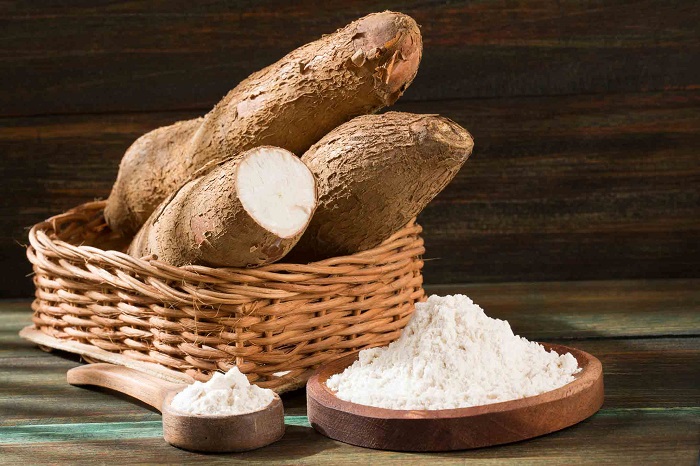
Gluten-free, grain-free, and nut-free, cassava flour is made from the entire cassava root and is low in calories, sugar, and fat. Although vitamin C, manganese, potassium, folate, and magnesium are all abundant, fibre is not. One thing to keep in mind with this flour is that some of its toxins must be neutralised by cooking it, so make sure any cassava flour you buy is made from the cooked root.
When cooking with cassava flour, you should be able to substitute it for wheat flour in a 1:1 ratio. It has a neutral flavour and texture so that it can be used as stand-alone flour or combined with other gluten-free flour. If you decide to use cassava flour instead of wheat flour, keep in mind that it’s best for recipes that don’t need to rise because it doesn’t produce the same fluffy texture as wheat flour. You should also be careful to whisk out any lumps, and you may need to reduce the amount of cassava flour if the finished product is too dry or gritty.
Coconut Flour
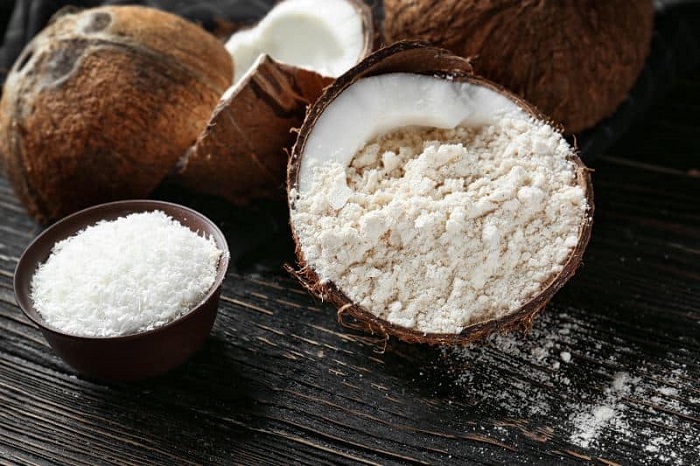
Coconut flour, like almond flour, is one of the most popular gluten-free flour. It’s nutrient-dense, has a light and powdery texture with a mild coconut flavour and is made by drying and grinding coconut meat. Coconut flour is high in dietary fibre and healthy fats but low in carbohydrates. As a result, it’s mainly used by people who follow a low carb diet, paleo diet or gluten-free diet!
The first thing you should know about cooking with coconut flour is that it absorbs a lot of liquid. When converting a recipe to use coconut flour, you’ll need a lot of eggs to provide moisture, structure, and bind the finished product. You can’t just replace wheat flour with coconut flour-you’ll need between ¼ and 1/3 cup of coconut flour for each cup of grain-based flour. In addition, for every ¼ cup of coconut flour, you’ll need two eggs.
Oat Flour
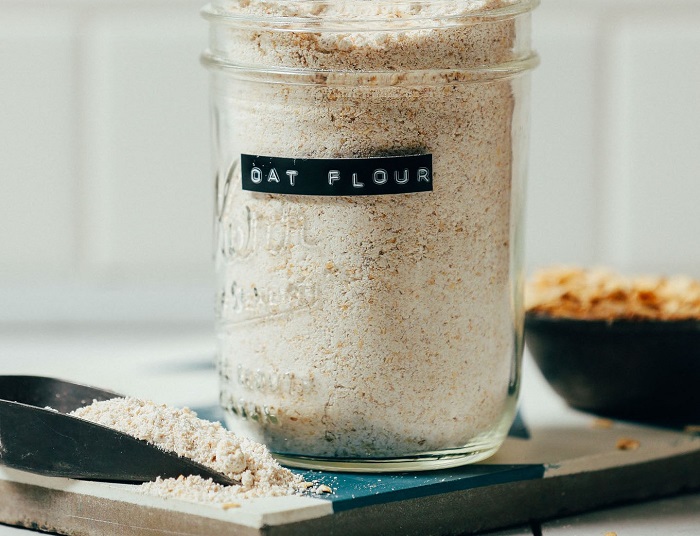
Because this flour is made from ground oats, it is gluten-free as long as the oats used in its production are free of cross-contamination. Oat flour has high dietary fibre content and is highly digestible – even more so than regular oats. Protein, B vitamins, phosphorus, and magnesium, as well as antioxidants, are all present. Oat flour’s fibre and nutrients help lower LDL or “bad” cholesterol while keeping blood sugar and insulin levels in check.
Because oat flour lacks gluten, it may make your baked goods too moist, so be cautious when using it. Oat flour is best for cookies and quick bread, but it can also be used in other gluten-free recipes when combined with additional gluten-free flour. You’ll need extra yeast to make yeast bread rise, while other recipes call for about 2 ½ teaspoons of baking powder per cup of oat flour. To make your oat flour, grind 1 ¼ cup rolled oats to make 1 cup oat flour.

















